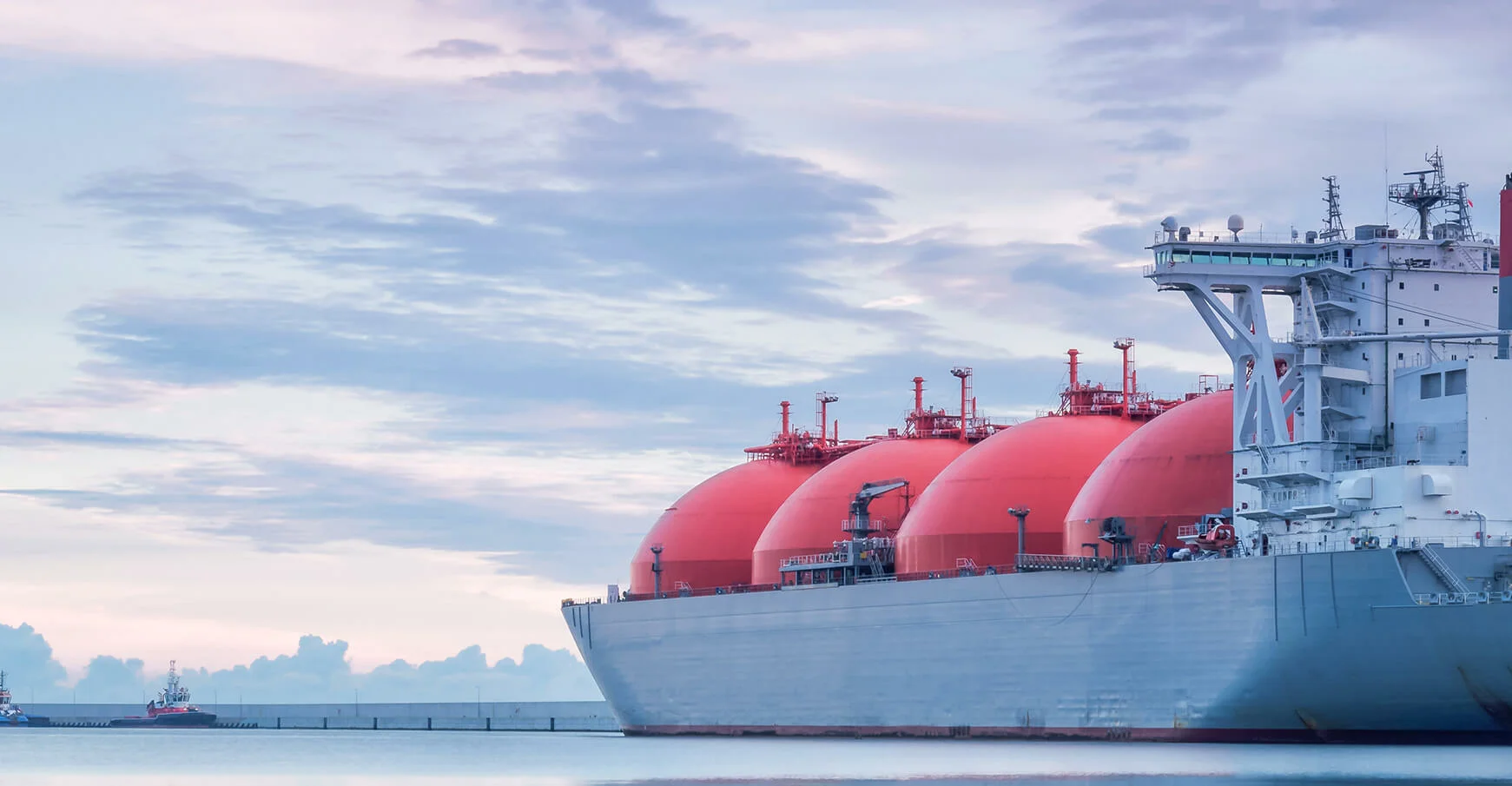Along with wind and solar power, natural gas may emerge as a winner resulting from the climate’s transformation. There are several reasons for this, one of which is that this fossil fuel has two renewable equivalents.
According to forecasts, the only fossil fuel expected to become increasingly important by 2040 is natural gas. Economists at the British petroleum group BP calculate that its share in the global energy mix will rise from the 24 percent at present to 26 percent, with the significance of oil and coal declining sharply in the same time frame.
The analysts cite a number of reasons for this in BP’s publication World Energy Outlook 2018. First of all, the global availability of gas will increase strongly. Because in the form of liquefied natural gas (LNG), natural gas only takes up one six hundredth of the volume that it has in gaseous state. By mid-2020, the USA could advance to become the world’s largest producer of LNG, shipping large quantities of its shale gas as exports to overseas markets.
Nevertheless, as with most segments of the global energy market, India and China will be the major driving forces on the gas market. Because, as noted in the current issue of World Energy Outlook published by the International Energy Agency (IEA), ‘This reflects the fact that gas looks a good fit for policy priorities in this region’. This is true because not only is natural gas suited for generating heat and electricity, it is also an effective fuel for motor vehicles. And according to the IEA experts, this relatively low-emissions energy source may thus allow these governments to address widespread concerns over air quality.
Steady gas consumption in Europe?
Similar developments are foreseen by the EU Commission for the 28 members of the EU: coal and oil consumption drops off sharply, while natural gas usage remains stable or hardly changes. In contrast to the global situation, which is marked by a continued increase in the consumption of all fossil fuels in absolute terms, use of coal and oil will fall significantly in Europe. However, according to the EU, the consumption of natural gas will remain widely stable through to 2040.
In this regard, one should note that – similarly to BP and the IEA – the EU analysts use current trends as the basis for projecting the benchmark scenario for the development of the energy markets. These current trends show that most countries are lagging behind when it comes to meeting their climate targets. A stricter approach in climate policy would probably lead to different results.
Even in that case, however, it is still difficult to predict how quickly natural gas consumption would decline. Because in terms of climate protection, fossil natural gas is much better than coal or oil since its use generates far lower carbon emissions.
At the same time, fossil fuels are needed to balance out the fluctuations in wind and solar generation, in order to ensure an uninterrupted supply of energy at affordable prices This is true throughout the year for electricity generation and also applies in particular in the winter for the heating market, where natural gas is the dominant source of energy.
Infrastructure – use it or expand it?
One factor in Europe which also suggests that natural gas may continue to play a key role in this region for quite some time to come is the existing infrastructure: pipelines allow large quantities of natural gas to be transported across borders, and many countries, including Germany, have a dense distribution network.
Of course, the electricity grid is also available almost everywhere. But this network is already working near capacity during peak periods because expansion of the grid has been delayed for years. If households were to switch over from gas to electric heating now, in order to use renewables energy, the capacity of the electricity network would shrink even more.
This would necessitate additional investment while the operation and maintenance of the existing gas network would rapidly become unprofitable due to lower utilisation. This is the conclusion reached by the analysts at the Cologne think tank ewi Energy Research & Scenario in their study ‘Energy market 2030 and 2050 – The contribution of gas and heating infrastructure to an efficient reduction of CO2’, which was commissioned by Gelsenwasser, Open Grid Europe and RheinEnergie.
In the study, the authors argue that maintaining the gas infrastructure may make sense in terms of climate policy. Because this infrastructure would then remain fully available if biogas and synthetic methane – which are carbon neutral equivalents of natural gas – are eventually placed on the market at competitive prices and in competitive quantities.
Take climate-neutral natural gas faster to market
Biogas is produced from the fermentation of organic matter. Like other e-fuels, synthetic methane is produced from carbon dioxide, obtained for example from power plant flue gases or from the ambient atmosphere, and hydrogen, which is produced from water using electrolysis.
The methane that is produced should be completely carbon neutral. With this in mind, green electricity is used as the energy necessary for the process. Currently, wind and solar plants are turned off when they generate more electricity than is needed, to prevent them from overloading the power grid.
Using the power-to-gas method, the surplus energy from wind farms and photovoltaic plants could be used to produce methane, which could later be utilised by gas-fired power stations to generate electricity and heat. Ultimately, this approach could also be used to power traditional automobiles and gas heating installations with wind and solar energy. In this scenario, gas would function as a storage medium for renewable energy.
Right now, this cycle is still too expensive. However, its chances of becoming viable on the market are higher if the full-coverage distribution network is maintained. Viewed from this perspective, the authors of the ewi study conclude that the uninterrupted use of natural gas would facilitate the cost-efficient transformation of the energy sector: ‘The infrastructures allow for an efficient prevention of CO2 emissions, looking towards the currently unforeseeable future beyond 2030.’
Photo credits: Germanovich, shutterstock.com; Wojciech Wrzesien, shutterstock.com

